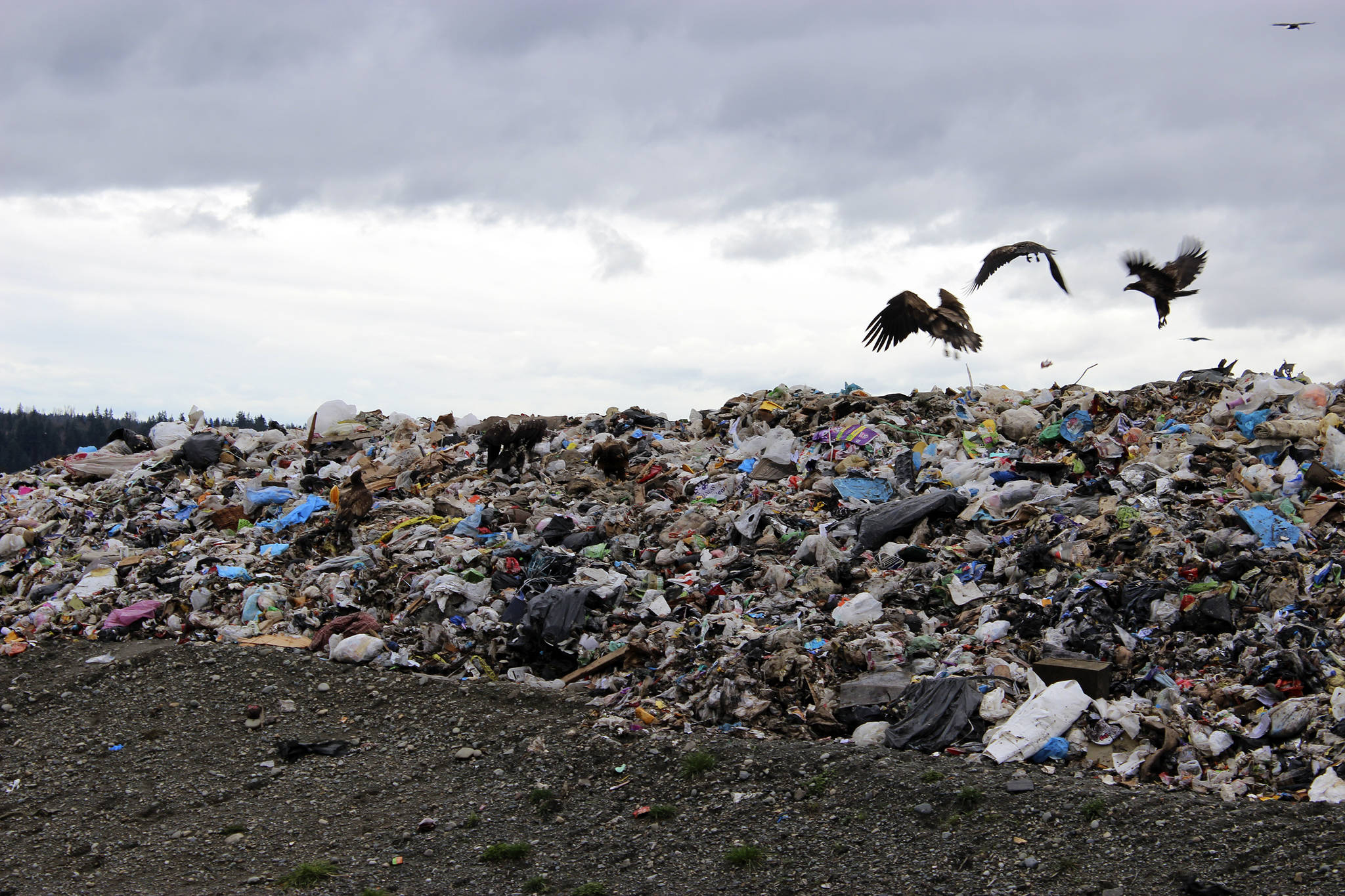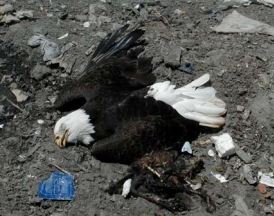Perhaps Ben Franklin had a point.
While other founders favored the bald eagle as a national symbol for its strength and majestic beauty, Franklin condemned the bird’s habit of scavenging and stealing food from other animals, calling it lazy and “often very lousy.”
A generation ago, that was rarely a problem. Between hunting, habitat destruction and the pesticide DDT (which led to fragile eggshells that meant many offspring died in incubation), the bald eagle was in danger of extinction. Only about 500 nesting pairs were left in the contiguous United States in the 1960s.

Thankfully, the species has mounted a comeback to 10,000 nesting pairs and is no longer classified as threatened, much less endangered — a striking success story of conservation and federal protection for the bird of prey that graces the nation’s Great Seal.
That rebound, however, has not come without issue: It turns out bald eagles are a real pain in the neck around trash dumps. They can grip all manner of waste, some of it rather vile, and fly away with it from the landfill, only to let it slip over the surrounding neighborhoods.

The problem has come to a head in the Seattle suburbs, as the King County Council’s struggles to figure out what to do with all its garbage, and with a landfill that was supposed to have been filled to capacity years ago, complicated by about 200 bald eagles regularly feasting off the dump’s mountains of food waste and other detritus.

So, too, do many gulls and crows and other birds, of course. But the strength and power that make the bald eagle such a proud national symbol also make it a disgusting neighbor for the people who live around the dump.

“Anybody that lives within close flying distance of the landfill knows that the eagles deposit this stuff everywhere,” one resident, David Vogel, said during a public meeting last month, according to The Seattle Times.
As he spoke, Mr. Vogel held a Ziploc bag that contained a biohazard container filled with human blood that he found in his yard. “The eagle population has exploded in the last five years, and why? Because they have a free lunch at the dump,” he said.

This week, the King County Council ordered up a study to see what can be done to prevent birds from dropping landfill garbage into nearby yards.
“We’re not talking about calling in the guys from ‘Duck Dynasty,’” said Reagan Dunn, vice chairman of the King County Council. But he said the problem described by Mr. Vogel was no exaggeration and has become a source of real frustration for homeowners as the eagle population has risen.
“We’re trying to reduce the aerial bombardment that is happening to our neighbors,” Mr. Dunn said, adding that the local population of ducks and ducklings — occasional prey for bald eagles — has been on the wane.
Landfills pose hazards for bald eagles, too. While dumps tend to be favored by younger birds that aren’t yet skilled at hunting down healthier game, some bald eagles have died from eating contaminated waste, including secondary poisoning by barbiturates from scavenging corpses of dogs and cats euthanized by animal shelters.
Nor are the problems isolated.
In Alaska, a fishing port in the Aleutian Islands typically sees six to 10 people treated for head gashes and other injuries from bald eagle attacks every year.
The town, Unalaska — sometimes called the nation’s “eagle attack capital” — is favored by the birds because of the mounds of tasty waste produced by fish processors.
And in Anchorage, the state’s largest city, several hundred eagles — along with other birds — have posed more than just the normal problems at the municipal landfill, where they converge in the winter in hopes of feasting on fish guts.
The wildlife is also a danger to planes using the runway at the nearby Air Force base. A large radar jet crashed there in 1995 after sucking geese into its engines, killing 24 crew members.
So, “hazers” have been hired to keep the birds at bay, at least to the extent they can. Meaning, as the local newspaper observed, that people are “employed by the government to, in part, harass the national bird.”
Which raises another problem: There really aren’t all that many options for remediation.
Though the birds are no longer classified as endangered, you still, obviously, cannot hurt them.
“It’s a dilemma that’s becoming more and more frequent as the population that was once driven down has come back,” said Kevin McGowan, an ornithologist at the Cornell Lab of Ornithology. “Bald eagles are back in a big way in places that hadn’t had them in a half-century.”
Drones and scarecrows have been used to frighten the birds. But in Washington State, the eagles also attack the drones. Falconers might be helpful against gulls, but not bald eagles. Netting is used sometimes, but that’s better for small, discrete areas.
“About the only thing you can do is harass them,” Dr. McGowan said. One favored technique: A souped-up bottle rocket that fires out of a pistol, flies a hundred yards with a screaming sound, and explodes. “That’s a pretty good thing to get an eagle to move away.”
But even useful tactics — like professional hazers or the bottle rockets — aren’t a permanent fix. “It’s like shoveling snow,” Dr. McGowan said. “You do it once, then you’re going to have to do it again.”

